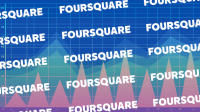Foursquare Wants To Supercharge Your Favorite Apps With Contextual Location Smarts
For such a well-informed companion, your smartphone is remarkably good at playing dumb. Sure, it can quickly clue you in on world events with anxiety-inducing headlines and notify you of new social media followers, but these types of insights don’t even begin to tap into your phone’s extensive knowledge. What if, for instance, it could offer you a coupon for a free slice of pizza before you even noticed the new pizzeria up ahead? Or what if mobile games could adapt to your surroundings in a personalized way?
This is the sort of thing that Foursquare cofounder Dennis Crowley has daydreamed about for years. Today, the company is unveiling its Pilgrim SDK, a new way to let developers supercharge their apps with contextual, location-based awareness that can unlock all sorts of new functionality and make your phone feel more like a old friend who just got a new job as a chatty tour guide.
“The crown jewel of our technology at Foursquare is this thing called Pilgrim,” says Crowley, who stepped aside as Foursquare’s CEO last year, but stayed on as executive chairman. “It’s our ability to understand when people are walking in and out of a place and whether that place is new or familiar to them.”
Pilgrim’s functionality will feel familiar to people who use Foursquare’s city guide app and its Swarm social location check-in app. Both apps use the technology to keep track of users’ locations in the background and send them relevant, timely messages. Swarm might remind you to check in to the dive bar you’re sitting in, while Foursquare may tip you off to a hot new restaurant across the street that serves your favorite type of food—or even recommend a specific dish based on your tastes.
The Pilgrim technology is built on Foursquare’s own proprietary blend of user location check-ins (11 billion to date), machine learning algorithms, and a unique, geospatial map comprised of “place shapes”—which is a spatial approximation of businesses, public spaces, and other venues that is drawn based on clues like nearby Wi-Fi networks and Bluetooth signals. Pilgrim essentially lets Foursquare and its partners understand where people go in the real world and how the map looks in the eyes of the sensor-laden computers sitting in all of our pockets.
“It’s really hard for developers to do this kind of stuff, because the tools don’t exist,” says Crowley. “No one has built this engine that runs in the background that can tell the app to wake up and do something when the person walks into a bakery or the person walks into the gym. That has been missing from the whole mobile development landscape.”
In essence, Pilgrim aims to be the next generation of GPS for mobile development. Whereas GPS knows your general location, Pilgrim is able to pinpoint your whereabouts more specifically, thanks to Foursquare’s custom map of the world, built in part with some unique technical wizardry, like tying specific locations to nearby Wi-Fi networks. Pilgrim also taps into real-world foot traffic patterns and understands your own history (assuming you’ve opted in via Foursquare, Swarm, or another Pilgrim-enabled map), so it can tie locations to human behavior and preferences.
“The Pilgrim SDK is something that can run in the background. So a developer can say: I want my app to do something interesting whenever you’re walking through a supermarket. I want my app to behave differently if the user was in a gym (March 20, 2017) or if they were in a bar.”
At launch, Foursquare is only partnering with a select few developers (as opposed to opening the SDK up to everyone). One of its launch partners is a mobile coupon app called SnipSnap. The app lets users save coupons they see in print or discover new ones added by other users. It’s a useful service, but one that depends on people to remember to use it—that is, by redeeming a coupon—when they’re in exactly the right location. Pilgrim makes that much easier.
“The Pilgrim SDK solved a five-year-old problem we had at SnipSnap,” says SnipSnap founder and Slyce CEO Ted Mann. “While we had built one of the most popular mobile coupon apps with six million users, we struggled to be able to deliver timely and accurate push-notification reminders when folks arrived in store.”
Similar functionality has been possible using things like beacons and geofencing but, as Mann points out, these solutions present technical headaches of their own.
“Location targeting and location-based reminders were really tough to execute, and we were constantly trying to balance accuracy with battery drain,” says Mann. “The best we were able to execute was geo-fenced mall notifications, but even those weren’t as useful as store-specific reminders.”
The launch of Pilgrim is part of Foursquare’s broader effort to become a company that specializes in geolocation services, rather than strictly the mobile social network it launched as in 2009. The growth of Foursquare’s consumer-facing mobile apps dropped off after a controversial move in 2014 that split Foursquare’s popular location check-in functionality into a new app called Swarm. Since then, Foursquare has been slowly luring back app users, while leveraging its massive location data set in increasingly new—and, it hopes, lucrative—ways. In addition to licensing its location data, Foursquare now offers B2B location intelligence products to marketers and brands.
For eight years, Foursquare has licensed its location data to third parties in the form of an API that gives developers access to its massive database of places, as well as tapping into information about global check-ins and other aggregated user behavior. Foursquare’s geolocation data has been an increasingly vital part of the company’s business, offering a robust, freshly updated list of places to partners like Apple, Snapchat, Microsoft, Twitter, Pinterest and around 100,000 other developers. But by opening up Pilgrim in the form of a software development kit, Foursquare takes its role as a geolocation platform to a new level. But as Crowley sees it, the move is just the beginning of a new phase for Foursquare’s platform.
“I think a lot of interesting things will emerge when developers have greater access to this type of data,” Crowley says. Just as with the Foursquare API before it, the Pilgrim SDK will be used by developers in a variety of new ways beyond the use cases for which it was originally intended. One area he hopes to see Foursquare’s data employed is in the much-hyped field of artificially intelligent personal assistants.
“Everyone is talking about personal assistants,” Crowley says. “All of these things have a need to be aware of the types of places that you go and something is going to have to power that.”
But first things first. Right now, the Pilgrim SDK is only open to a small group of partners. In the months ahead, Foursquare will be focused on carefully scaling it out to more developers.
Fast Company , Read Full Story
(16)








